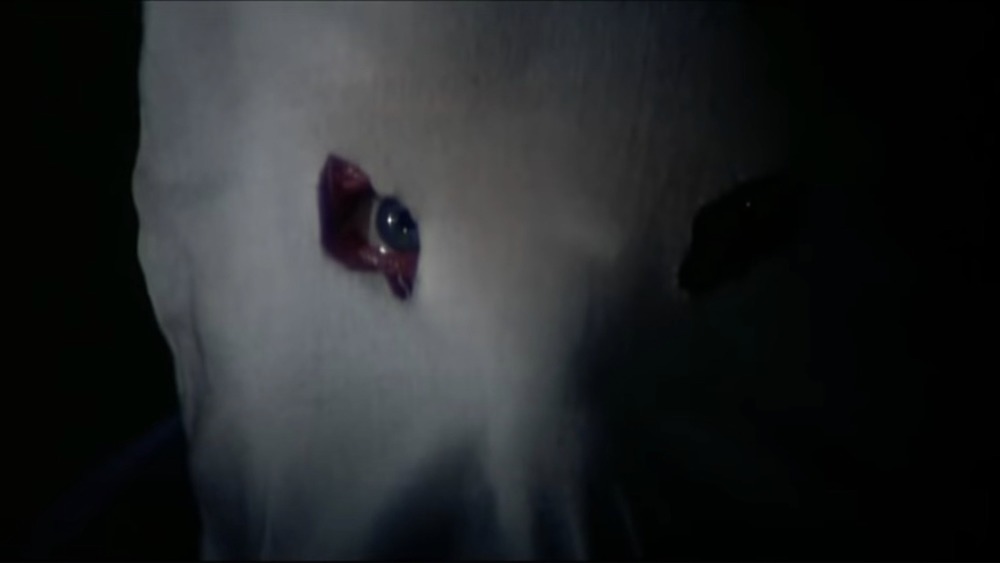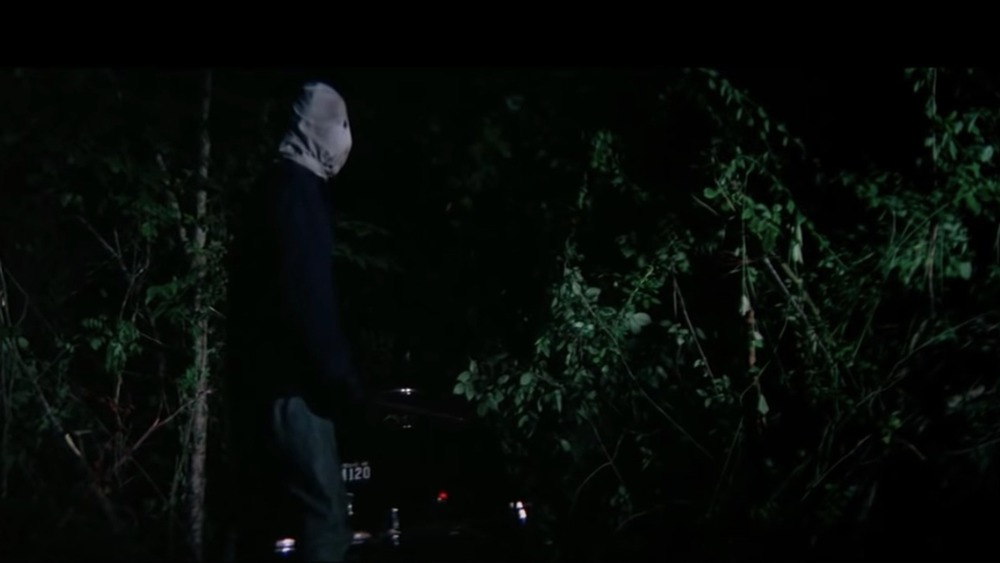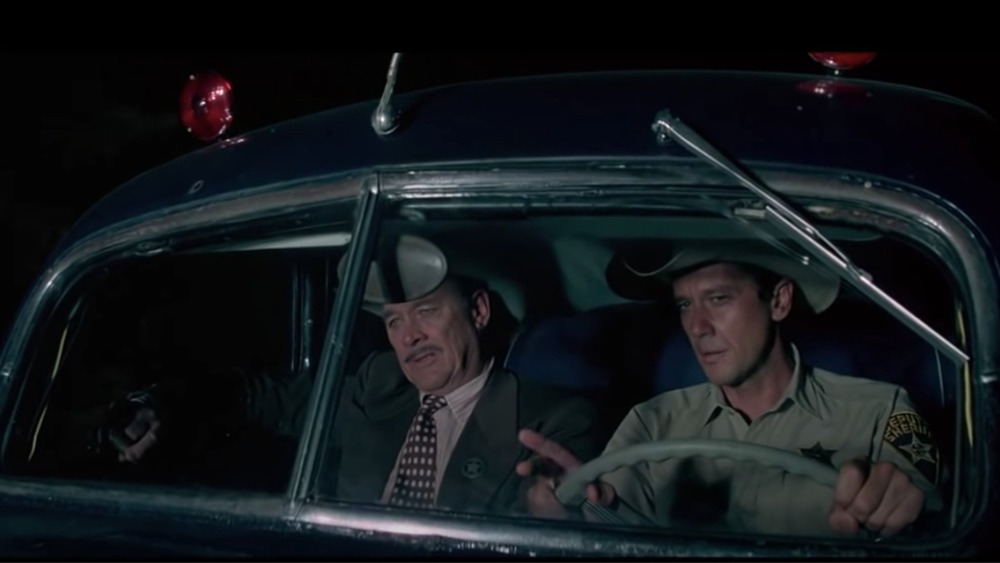The Creepy Truth About The Texarkana Murder Mystery
In 1946, the town of Texarkana, which straddles the state line between Texas and Arkansas, was rocked by a series of brutal attacks that ultimately left five people dead and three gravely injured. What the media quickly dubbed the Texarkana Moonlight Murders, carried out by a shadowy figure the local paper called the "Phantom Killer," sent the small southern city into a panic.
According to the New York Daily News, the terror began on February 22, when a date that was going pretty well ended in tragedy. Jimmy Hollis, 25, and Mary Jeanne Larey, 19, had gone to see a movie and then went to park on a local lovers' lane. But their tryst was interrupted by a man wearing a white sack with eye and mouth holes cut into it, shining a flashlight into their car. The man ordered Hollis to take his pants off, then beat him badly enough to put him into a coma for several days. He then caught up with Larey as she tried to escape. He beat her as well, and sexually assaulted her with the barrel of the gun he had threatened them with.
The young lovers survived the attack, but had differing reports of who had carried it out. Larey claimed that the man had been black, despite not having seen his face, but Hollis said he believed the man to have been white. The next victims of the Phantom Killer, however, would not be as fortunate as his first.
The Moonlight Murders terrified the citizens of Texarkana
The second attack came about a month after Hollis and Larey were assaulted. Again, the victims were a couple of sweethearts out for a night of intimacy on a local lovers' lane, but this time the Phantom Killer didn't leave anyone alive. The bodies of Richard Griffin, 29, and Polly Ann Moore, 17, were discovered the following morning. They had both been shot several times in the back of the head. In April, Paul Martin, 16, and Betty Jo Booker, 15, were found murdered after a high school dance. They had also been shot to death.
The term "serial killer" hadn't been coined yet (according to Refinery29, it entered the lexicon via a 1981 article in The New York Times), but authorities in Texarkana strongly believed that a single killer had been behind all of the attacks.
The FBI was brought in, as well as the Texas Rangers. Local gun shops enjoyed a flurry of business, as people flocked to buy up firearms to defend themselves against a possible attack. Residents booby-trapped their houses with pots and pans full of silverware or old nails. Texarkana was on high alert, but despite the best efforts of the authorities, the violence continued. Virgil and Katie Starks were shot in their own home in May. Virgil, 37, was killed, but Katie made it to the safety of a neighbor's house despite being hit in the face with two bullets.
The Texarkana Murder Mystery remains unsolved to this day
In June of that year, police arrested Youell Lee Swinney, 29, for stealing cars. But as they drove him to the station, the young man asked a strange question for someone accused of car theft: "Will they give me the chair?" That led police to suspect that they had ended up arresting the Phantom Killer. They were also told some incriminating stories by his wife Peggy, 21, whom they had arrested a few weeks earlier for the same thing. Unfortunately, the law barred Peggy from testifying against her husband, and the detectives lacked evidence strong enough to convict Swinney for murder. They put him behind bars for car theft.
Swinney died in 1994, and no evidence has come out to unequivocally prove whether or not he was the Phantom Killer. According to Texas Monthly, however, local journalist James Presley's book The Phantom Killer: Unlocking the Mystery of the Texarkana Serial Murders: The Story of a Town in Terror presented a compelling case for Swinney's guilt in 2014. "I daresay ... every lawman who worked this case never quit mulling the story over and over in hopes of turning up the hard evidence that could have convicted Swinney of the murders," Presley told the magazine.
The killings were also the inspiration for the 1976 movie The Town That Dreaded Sundown, which Texarkana still shows each Halloween in a park near one of the crime scenes.


